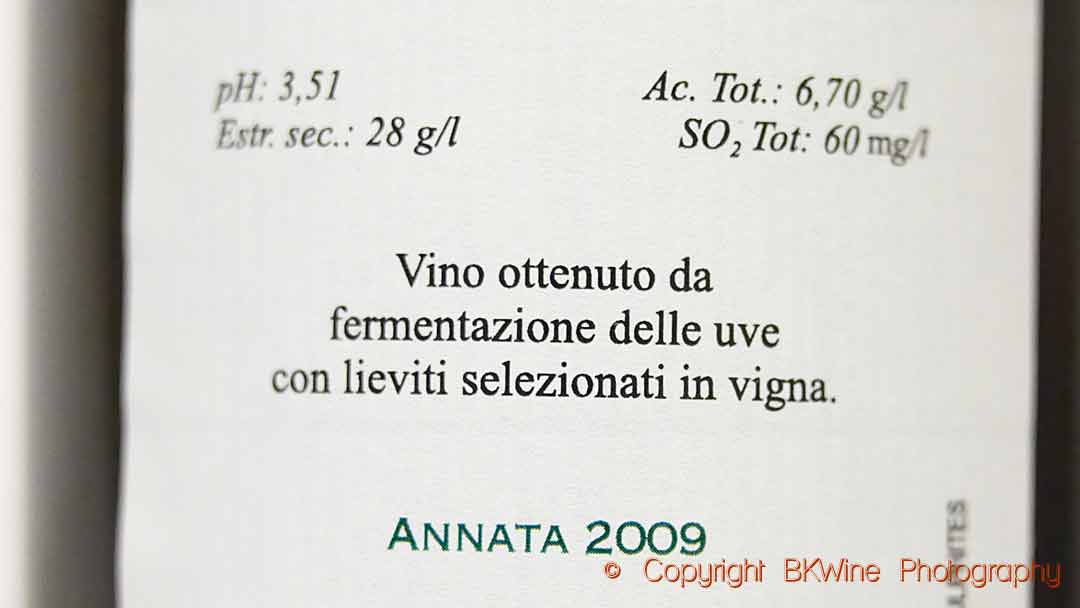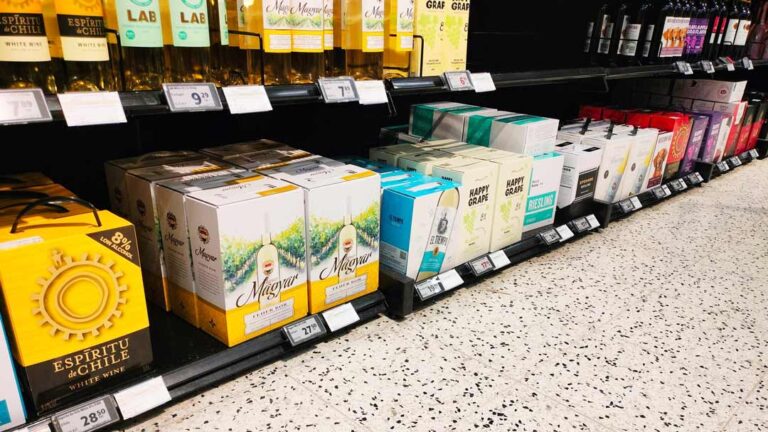The new EU law concerning the list of ingredients for wine entered into force on 8 December this year. But do not look for it on the bottles just yet. The law applies to wines produced after December 8, 2023, and since most wines harvested during this autumn are fully fermented and finished, the law only applies in practice from vintage 2024.
How important is this new law? It is essential because there is no reason why wine should be exempt from the law that applies to all other packaged foods. How important it will be for wine drinkers is hard to say.
The list of ingredients tells you what is used in making the wine and is in the wine when it is bottled, not how it was made. If a processing agent has been used that has since been removed from the wine, it does not need to be stated. Besides the obvious – grapes – some additives must be mentioned if used.
The three most important groups of additives are preservatives (ascorbic acid, sulfur dioxide, potassium metabisulphite, etc.), agents that regulate the acidity (citric acid, lactic acid, tartaric acid, etc.) and stabilisers (mannoproteins from yeast, gum arabicum, metatartaric acid, etc.).
In addition, you must state sugar or concentrated grape must if the wine has been enriched (“chaptalised”).
It remains to be seen whether wine consumers will be shocked to read that their favourite wine contains any of this. The ingredients can be stated directly on the label or using a QR code on the label.
Two things to note though:
1) This list is not a question of a chemical analysis, listing alcohol percentage, acidity level, sulphur contents etc.
2) Contrary to what is sometimes said, it has never been forbidden to put a list of ingredients on the label.












2 Responses
I see the laws that both the EU and the US pass. Then I read views, from people with lots of experience and people with little experience. But, the older I get, the more I trust my own lived experience…….maybe you call that wisdom or just some crotchety old person!
This is what I can predict:
In general, people don’t understand chemistry, don’t know the names of substances, and cannot understand what a lots of ingredients ultimately mean. They already don’t understand that wines without added sulfites still contain naturally produced sulfites. They don’t understand that adding acids, doesn’t mean the final product is more or less acidic than a wine without added acids. They for sure will not know that a wine that is chaptolized doesn’t have more sugar than a wine made with riper grapes. If someone reads that sugar was added, they don’t understand that the wine is dry and now contains alcohol and not sugar. Adding ingredients to a wines label will only serve to confuse people and create more misinformation. It will also create great fake marketing opportunities for smart marketers ie., let’s take those overipe bunch rotted grapes and cover them with high alcohol and add “contains no added sugars” on the label! As pointed out, there is no law now that you can’t do that, but it makes sense when other wines must add the ingredients. For sure you know that wine can contain unhealthy substances without them being added (ethyl acetate, any number of bacteria).maybe that means that all wines eventually need to be analyzed before bottling (that would be the natural next step and would kill any small producers). Also, an ingredients list, won’t need to list processing aids like bentonite, even though some of those things may still be in the wine in small quantities or in an altered form. On the other hand, if you add things like Mega Purple, I assume you can just leave that out because it’s just grapes. Why not decide certain things that need to be added to labels like preservatives and known allergins and leave it at that? A law like this, definitely benefits larger producers, with ultrafiltration ability, state of the art labs, and lots of money. It definitely creates a burden for smaller vineyards and wineries. Thus, like all the multitude of regulations enacted every year, slowly but surely destroys small businesses and replaces them with large multinational corporations. People have been drinking wine for 10,000 years and growing food for many years, and yet unless you’re Amazon or Monsanto, with increasing regulation, you might as well hang it up. All of these laws and information, do not make people safer. For instance, even though people have been drinking wine for thousands of years, you can clearly see that recently, wine is associated with cancer. Never mind the fact, that Mediterranean societies have lower cancer rates, even though they consume a lot of wine! Another thing for the public to be confused about! Remember, that when the tax code gets more and more complicated, you need more and more tax professionals, that don’t necessarily even know how to read a balance sheet, But instead, have studied every tax loophole in an effort to upend contradicting tax codes…… yet another unnecessary confusion of modern life. I would say that we don’t have to ask for whom the bell tower tolls……. “It tolls for thee”.
Yes, there’s certainly a lot of things one can discuss about this. And, for sure, wine is one of the most regulated food products.
I guess one way you can look at the new regulations is that it is simply a way of requiring wine to have declarations of ingredients in the same way as all other foodstuff require it (at least in the EU). Not mush more than that really.